Jean Turner | October 13, 2016
Lone American on the World Enduro circuit, Taylor Robert spent 2016 proving himself on the international stage.
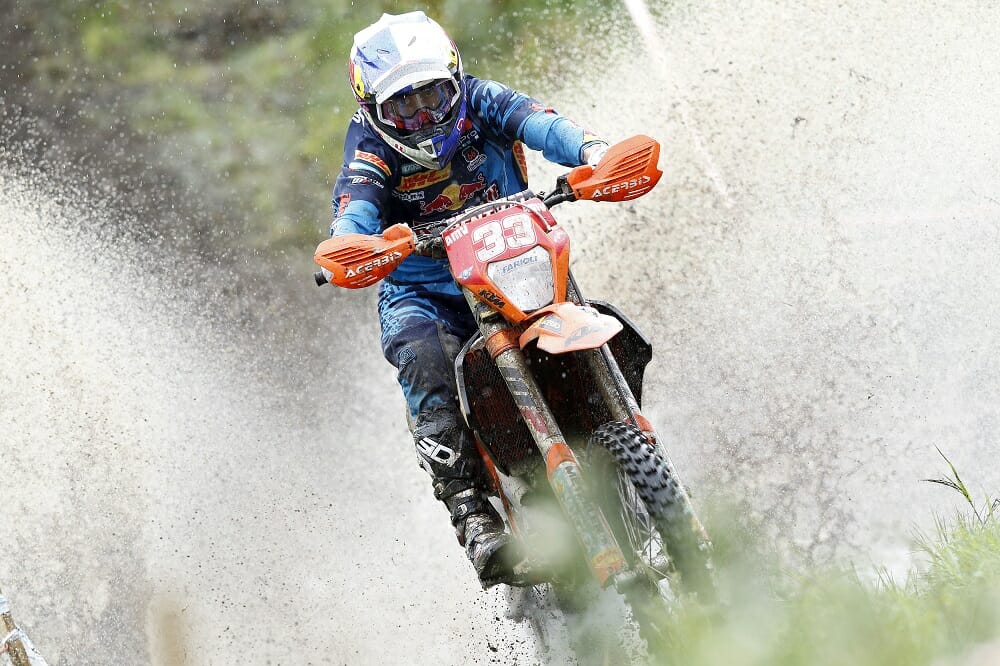 Taylor Robert made quite a splash in his first season competing overseas in the FIM Enduro World Championship.
Taylor Robert made quite a splash in his first season competing overseas in the FIM Enduro World Championship.
“I like riding my dirt bike where no vehicle has gone before,” reads the quote on Taylor Robert’s Instagram page. After having raced motocross, the World Off Road Championship Series (WORCS), AMA EnduroCross and extreme enduros around the world throughout his diverse career, it is plain to see that the Arizona native is thrilled by the prospects of the unknown. He found plenty of unknowns this year in his first full season competing in Europe, where he took on both the FIM SuperEnduro World Championship and the prestigious FIM Enduro World Championship (EWC), but Robert thrived in the face of the steep learning curve.
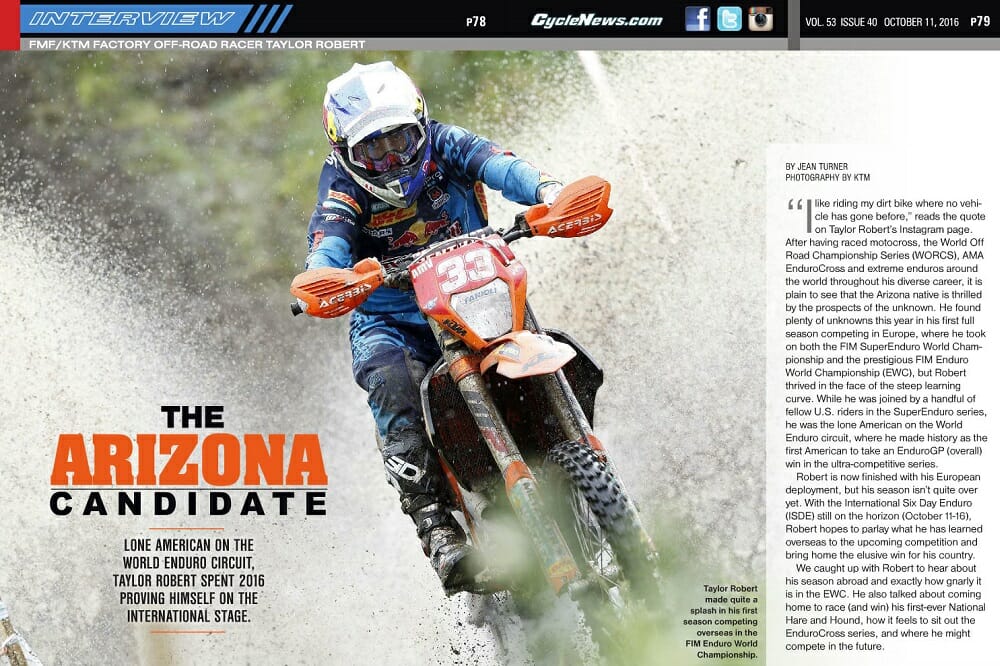
To read this in Cycle News Digital Edition, click HERE
Photography by KTM
While he was joined by a handful of fellow U.S. riders in the SuperEnduro series, he was the lone American on the World Enduro circuit, where he made history as the first American to take an EnduroGP (overall) win in the ultra-competitive series.
Robert is now finished with his European deployment, but his season isn’t quite over yet. With the International Six Day Enduro (ISDE) still on the horizon (October 11-16), Robert hopes to parlay what he has learned overseas to the upcoming competition and bring home the elusive win for his country.
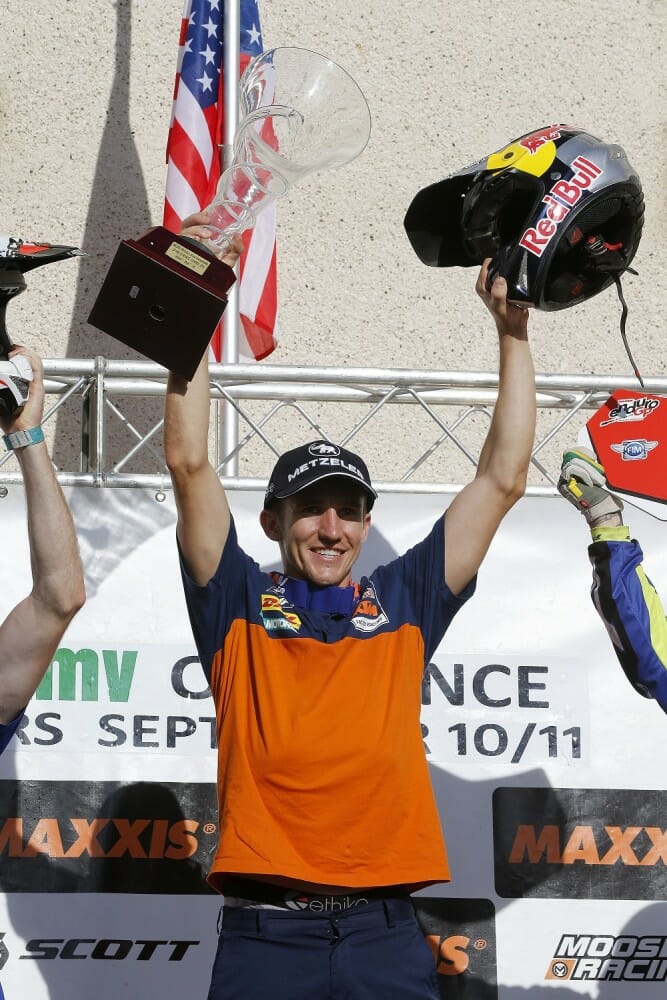 Robert faced a steep learning curve in the unique World Enduro format, but came out on top of the E2 division multiple times.
Robert faced a steep learning curve in the unique World Enduro format, but came out on top of the E2 division multiple times.
We caught up with Robert to hear about his season abroad and exactly how gnarly it is in the EWC. He also talked about coming home to race (and win) his first-ever National Hare and Hound, how it feels to sit out the EnduroCross series, and where he might compete in the future.
Tell us about your season.
It’s been pretty crazy. It was a lot to learn. I kinda knew what to expect from doing Six Days. But these races, I’d say, are even tougher than Six Days. They’re longer days, we do more walking [the special tests], the weather was terrible at almost every race. It was definitely exhausting. But I’m glad I did it; I’m definitely a better rider now than I was at the beginning of the year.
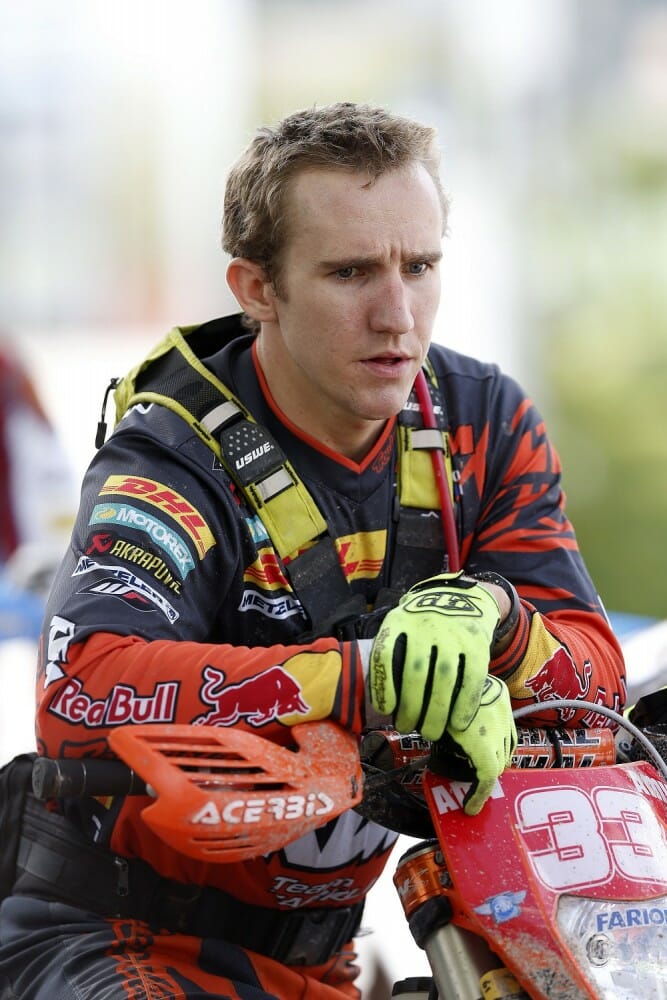 Each round of the EWC was a grueling weeklong effort for the Arizona rider.
Each round of the EWC was a grueling weeklong effort for the Arizona rider.
It’s hard to imagine longer days than at Six Days where you’re up at the crack of dawn and walking tests until dark!
[laughs] Well basically for me, every race turns into about a week long. I fly in on Monday, get there on Tuesday, we walk all day on Wednesday, pretty much all day on Thursday. Usually on Thursday we do a little shakedown on the race bikes and then we walk like half a day on Friday, then we do a Super Test on Friday night.
The actual days on the bike are longer because there are only 100 riders instead of 400 at Six Days, and the tests are a lot longer, too.
We usually start at 9:00 a.m. and we get done around 5:00 in the afternoon. Then we do podiums and autograph signing and then we go back out and walk some more. Then you do it all over again on Sunday. It’s a lot of repetition and a lot of work.
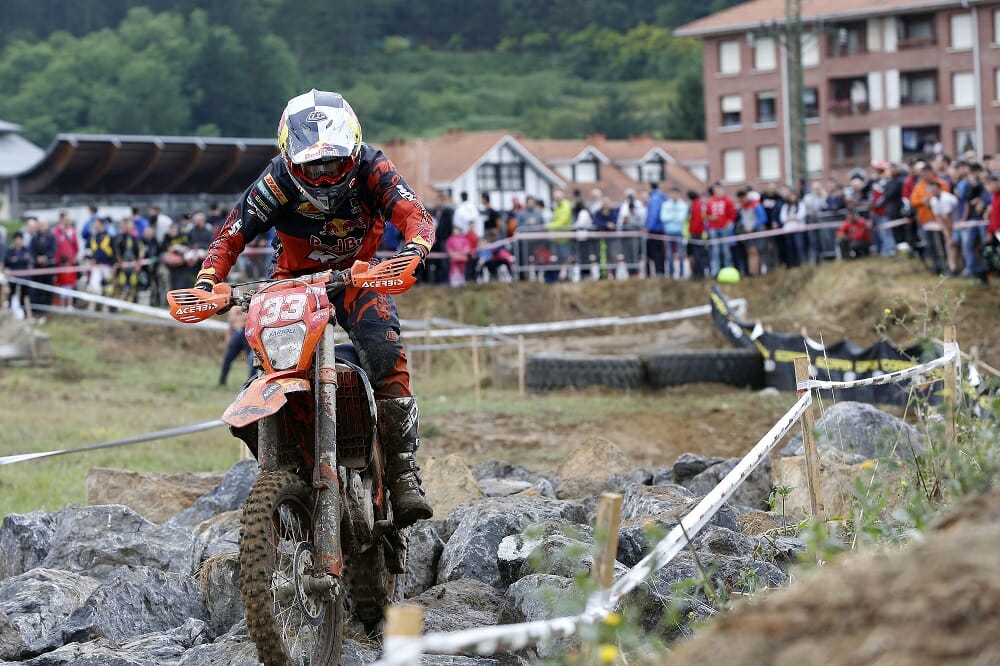 The Friday evening Super Tests gave Robert a chance to flex some EnduroCross skills.
The Friday evening Super Tests gave Robert a chance to flex some EnduroCross skills.
How many hours are you on the bike?
About eight. We usually start at 9:00 and then we’re done by 5:00. It’s a regular workday! [laughs] You’re only racing for like an hour to an hour-and-a-half of those eight hours, but still you’re on the bike for that whole time. When it’s really bad weather, it just wears on you so much. It rained at all the races except for the first race and the last race. Not just like it rained enough to make the track nice—they were all complete mudders. When you’re wet for eight hours and you have to change goggles at every test and you’re changing gloves… there was one race where we did three laps throughout the day and I was changing my whole gear setup every lap. It just wears on you mentally and physically.
Was it tough to adjust to all that?
Yeah. I actually did really well at the second race [in Portugal], which was the first wet race we had. I won the E2 class there, which, I kinda surprised myself. I mean, I never ride in the mud. I live in Arizona and it doesn’t rain at all here. Whatever the conditions, it comes down to who makes the least amount of mistakes. There’s usually always four or five guys that are really close in times, and if you wreck one time and you’re out of it. Luckily that race I didn’t make any mistakes, but there were some other races where I made some big mistakes. So yeah, it was a hard adjustment and more than anything it was just exhausting.
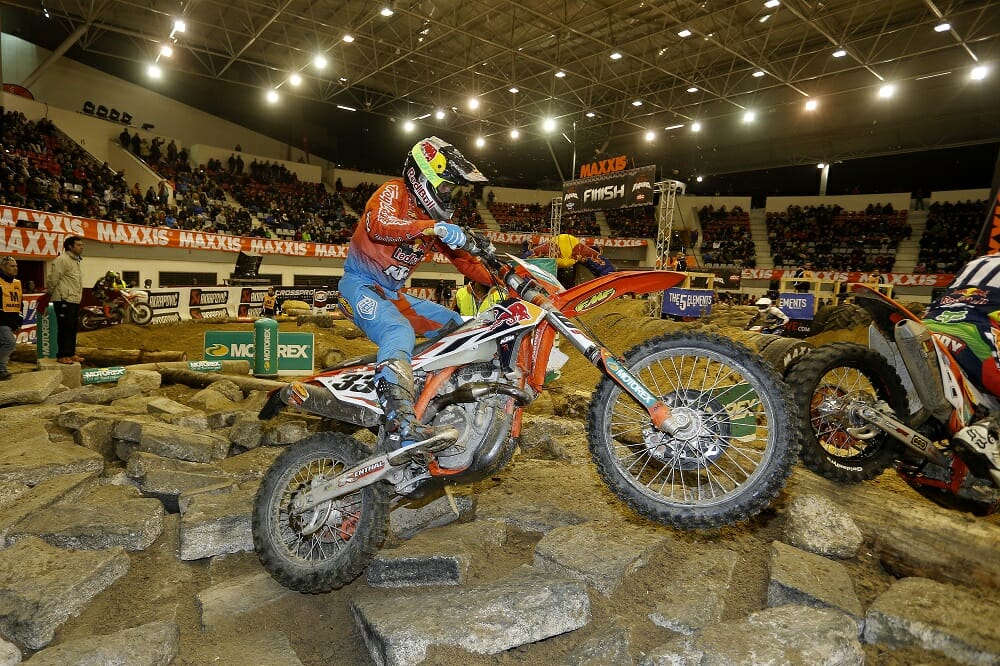 Before taking on the EWC, Robert also contested the winter FIM SuperEnduro World Championship.
Before taking on the EWC, Robert also contested the winter FIM SuperEnduro World Championship.
It is harder to keep up the intensity when you’re racing against the clock and you don’t have the competitor right next to you?
No not for me. Just because I’ve done Six Days so many times and I know that aspect of it. But what’s frustrating is that you can’t watch [the other racers]. You have no idea where those guys are going faster than you! You can do a test as perfect as you think you can, and you’re like ‘There’s no way anybody can go faster.’ And then you look at the times at the end of the day and somebody went 10, 15, 20 seconds faster than you and you’re mind-blown like, ‘I have no idea where that’s possible.’ But obviously it is because they’re doing it! [laughs]
There were a few times this season you said it was really sketchy and that you were riding at levels you weren’t comfortable with. Talk about that.
The enduro tests at the world level are just so much more technical than anything you would ever see at a Six Days, and most of it is because it’s all professional riders at the World Enduros. There’s no amateurs and they can make the tracks as tough as they want to. I felt there were a couple tests where they could have done a little bit better job of making it safer. Especially the ones in Finland. Those were the ones I hated the most. They’d run you through the forest, which was fine, but they’d run you through these sections with hidden stumps and rocks and they wouldn’t even paint the stumps. And it’s not like you’re out there on a joy ride. You’re going 110% trying to find every little second you can and you hit those stumps and rocks and you going over the bars pretty quick. I had a lot of really big—for lack of a better word—‘oh shit’ moments. I was really happy I didn’t get hurt over there this year because there were a few spots where I was on the edge, for sure.
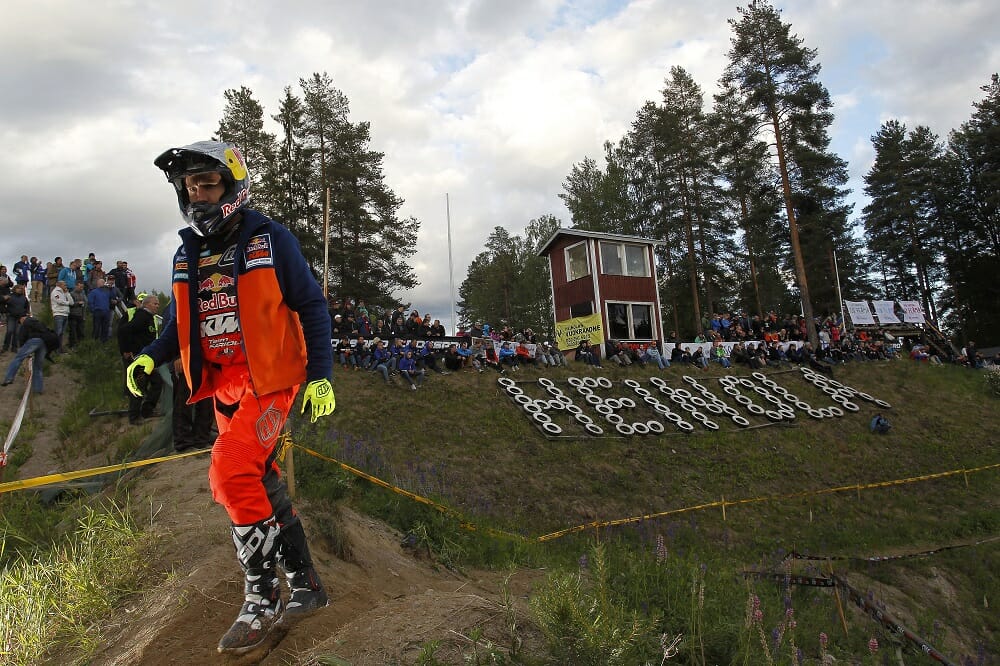 Robert walks the course in Heinola, Finland. Walking the special tests is a major part of prepping for World Enduros.
Robert walks the course in Heinola, Finland. Walking the special tests is a major part of prepping for World Enduros.
It sounds like having done all that, Six Days will be an easy event for you.
[laughs] Yeah I hope so. It’s just good that I went over and did that. Not only for my own personal benefit, but there’s a lot of little tips and tricks that I can pass on to the other team USA guys. Hopefully give us just that little extra edge that we need to get an overall.
What was the appeal that led up to you wanting to go to Europe for an entire season? Because that’s not a common thing for an American to do.
No, it’s not. I think I’m only the third American to do the whole series. Nate Kanney did it and Ian Blythe. It was something I’ve wanted to do since the first time I went to Six Days in 2010. I was like, ‘man I’d really like to go over and try some of those World Enduros, because I think they’re obviously some of the fastest off-road riders in the world, so I’d like to try to mix it up with them.’
When I signed my KTM contract for 2014, I told Antti [Kallonen, KTM North America Off-Road Team Manager], ‘If I have any opportunity I’d love to go over and try some World Enduros.’ He was like, ‘I don’t know if we’re going to be able to make that happen.’ Then after Six Days last year Fabio Fairoli, the guy who runs the KTM team in Europe, asked if I had any interest in doing the whole series and I was like, ‘Yeah, I do!’
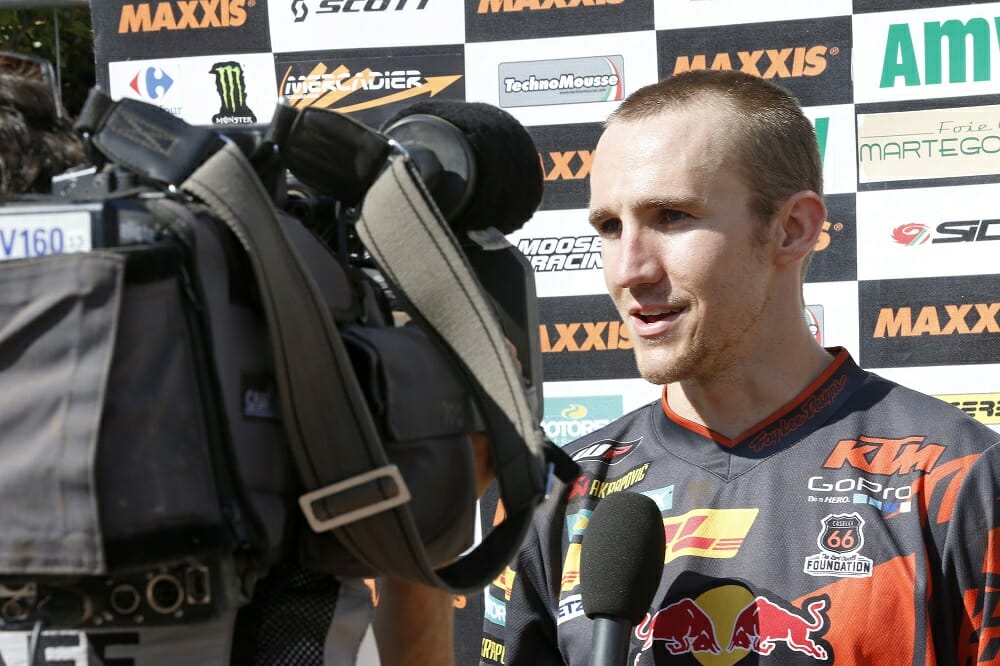 Not many were expecting big things from the young American, but Robert gained plenty of notice from the European crowd.
Not many were expecting big things from the young American, but Robert gained plenty of notice from the European crowd.
What was the reception like over there?
I would say everyone was really cool with having me over there. Obviously they don’t want to be beat by me and I don’t want to be beat by them, but they were all super nice to me. My girlfriend went with me to a few of the races and she was talking to some of the other wives and they were like, ‘Yeah, Taylor has really surprised us.’ She said that pretty much all the Europeans were pretty impressed with me, so I had a good time.
Tell me about your EnduroGP (overall) win at the finale in France.
Honestly I wasn’t really even paying attention to the GP class because that was something new this year. None of the riders really paid attention to it because our bonuses and championship stuff were all about our class wins, not necessarily GP wins. The last race, the guys I was battling with were in my own class as well (E2), so I won my class and I happened to win the GP at the same time.
It was a little bit of weather and terrain that helped me out, and just having a nice summer break off. I was pretty exhausted after the first half of the season. Basically from December (2015) until June, I was spending at least one or two weeks a month in a different country. After the race in July I was able to be home for a month and a half, so that was nice, time to get a little recharge. But yeah, the terrain in France was similar to west coast—deserty, dry, hard-pack with some rocks. And we didn’t get any rain, so that was nice. I was really excited I was able to pull it off in the last race.
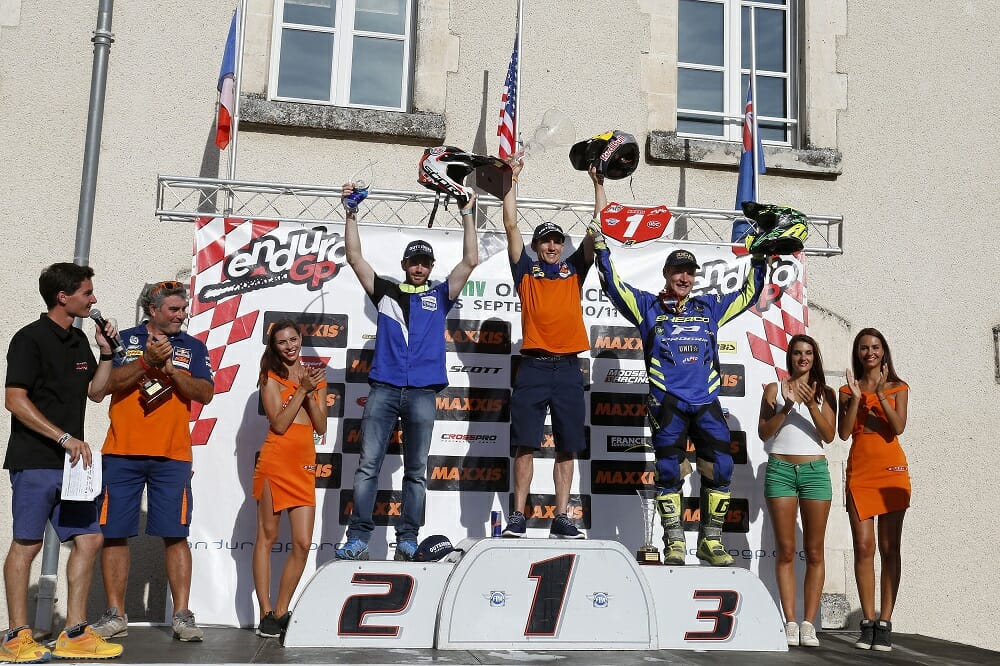 Robert ended his season on a winning note, topping his E2 class and also taking his first EnduroGP (overall) win.
Robert ended his season on a winning note, topping his E2 class and also taking his first EnduroGP (overall) win.
Would you say you were able to achieve your goals for the season?
Yeah I really wanted to get on the podium and I was in top-three in the points for a good majority of the season and then I had three bad races – Finland, Sweden and Italy. I was like fourth and fifth in my class and I lost a lot of points there. I really wanted to get on the podium in my class but I missed it by about five points. It’s something to look forward to if I go back.
Is that the plan? To go back?
Maybe. I have a couple options. I haven’t signed anything yet so I’m not sure what I’m doing.
Speaking of back home, you recently decided to race a national hare and hound and went out and won it! How did that come about?
It was an opportunity with KTM. They asked me if I wanted to try one. Maybe in the future I would like to try some rally stuff, and hare and hound is our best gateway into rally we have here in the States so it was like, ‘If you have any interest in doing rally in the future, maybe you should try a hare and hound.’
It was actually pretty fun. I’ve done desert races. I’ve done Baja and some local Arizona races, but I’ve never done a true national hare and hound. It’s definitely a little different; going really fast over terrain that you don’t know is different. Because even at Baja, you know pretty much exactly where you’re going. It was a good experience and I’m glad they gave me the opportunity to try that.
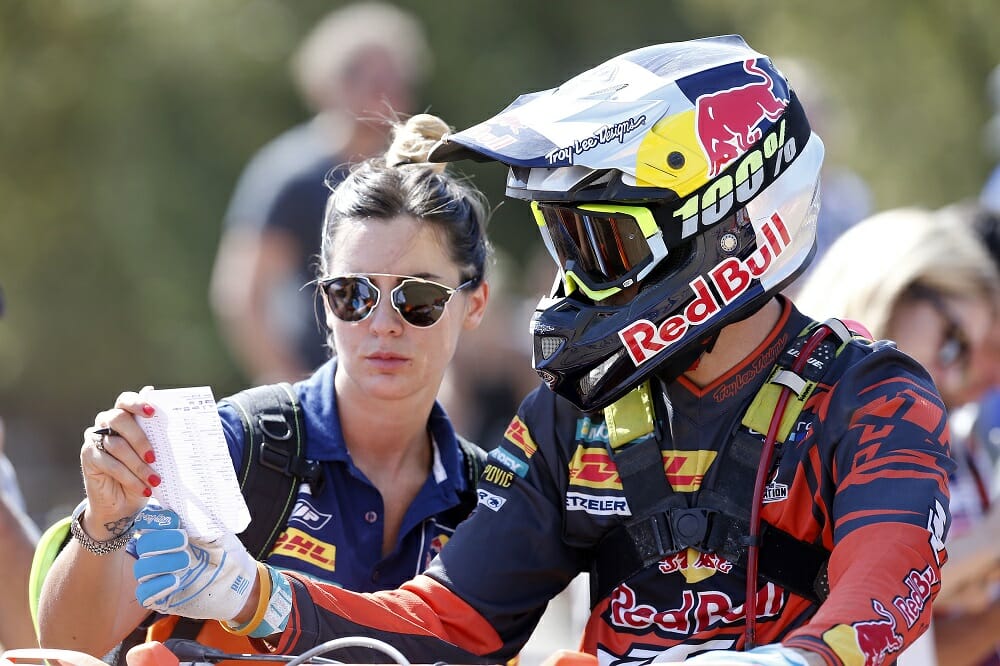 Robert gets some team support during the final round in Cahors, France.
Robert gets some team support during the final round in Cahors, France.
You’ve been a long time EnduroCross racer; does it feel weird to you to not be a part of that this year?
Yeah, it does! Obviously I know all those guys really well and we’ve been racing together a long time. Any time they’re at a race, I’m watching on live timing and trying to keep up with it. It’s weird not being there and you always kinda put yourself in their shoes like, ‘Oh, I wonder where I would be finishing if I was there right now.’ At the same time I was glad I got to try something new.
You recently did the Phoenix round of EnduroCross and finished an impressive second! That must have been fun.
Yeah, it was a fun event because it was no pressure for me. I haven’t done any other [EnduroCross] races and I don’t plan on doing any other ones so I just went out for the hometown one. The stadium is only about 15 minutes from my house so that was a nice change to do a race that’s so close to home. I practiced a couple days before the race, which was the first time I’ve ridden EnduroCross in six or seven months so just kinda jumped right into it and luckily I liked the track and I did pretty good. The track was a really good combination of some doable jumps—but not everybody was doing them—and a really technical rock pile and matrix.
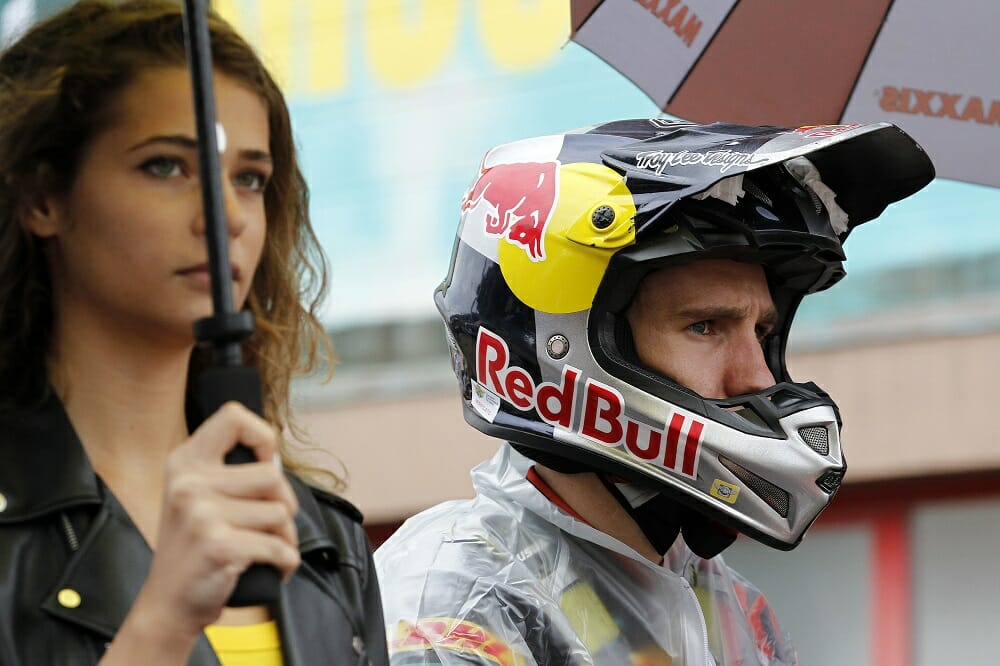 Poised and focused at the beginning of what would be a long and exhausting day in the Italian mud.
Poised and focused at the beginning of what would be a long and exhausting day in the Italian mud.
Does it make you wish you could be racing the full season?
No. EnduroCross is definitely fun, but I don’t know anybody that actually enjoys putting down practice motos on EnduroCross. It just beats you up so much. It’s hard. There’s nothing easy about it. I don’t really miss that part of it. It was nice to go out there and do well without a whole lot of practice under me but at the same time, I’m pretty content with what I think I’m going to do next year. CN
To read this in Cycle News Digital Edition, click HERE